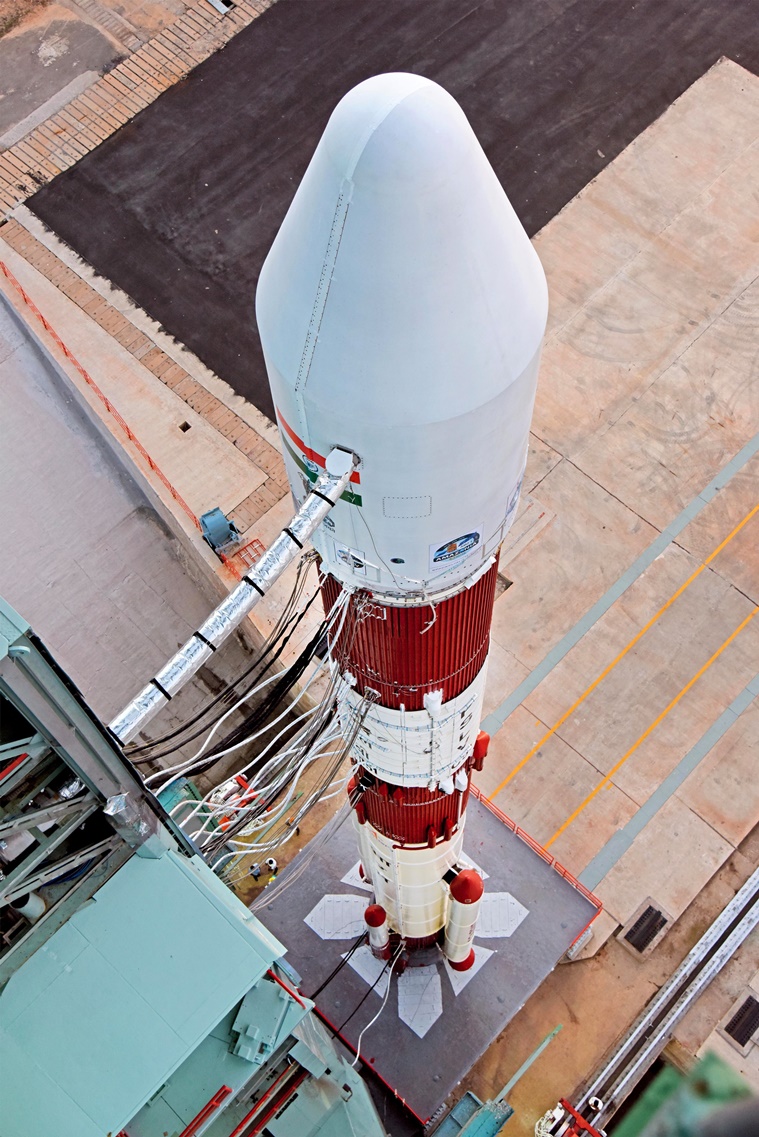- India
- International
Explained: ISRO’s PSLV-C51 launch, and why Pixxel India’s Anand satellite missed the flight
Bengaluru-based Pixxel India has planned a vast constellation of earth-imaging satellites that would continuously monitor every part of the globe and beam high-resolution imagery and other data that can be used for a variety of applications related to climate change, agriculture, and urban planning.
 The first of these satellites, called Anand, was supposed to be on the PSLV-C51 rocket that lifted off from the Sriharikota launching range on Sunday morning. (Twitter/@ISRO)
The first of these satellites, called Anand, was supposed to be on the PSLV-C51 rocket that lifted off from the Sriharikota launching range on Sunday morning. (Twitter/@ISRO)When the PSLV-C51 mission was announced, the most excitement was about a satellite that eventually could not be part of Sunday’s launch. The launch vehicle successfully injected Brazil’s Amazonia-1 satellite and 18 co-passenger sattelites into their intended orbits in a predetermined sequence.
The star that did not show up at the launch party was a satellite from Pixxel India, one of several new startups that are billed to do to India’s space sector what SpaceX or Planet Labs have done in the United States.
Bengaluru-based Pixxel India has planned a vast constellation of earth-imaging satellites that would continuously monitor every part of the globe and beam high-resolution imagery and other data that can be used for a variety of applications related to climate change, agriculture, and urban planning.
The first of these satellites, called Anand, was supposed to be on the PSLV-C51 rocket that lifted off from the Sriharikota launching range on Sunday morning.
 ISRO’s PSLV C-51 carrying Amazonia1 and 18 Co-passenger satellites. (Twitter/@ISRO)
ISRO’s PSLV C-51 carrying Amazonia1 and 18 Co-passenger satellites. (Twitter/@ISRO)
\But less than a week before the launch, the company announced that due to “certain software issues” during testing, it would not go ahead with the launch of the satellite at this time. “Given the time and effort that has gone into making the satellite, it did not make sense to rush a satellite to launch in which we do not have complete confidence at this time. We have thus decided to push our launch by a few weeks, re-evaluate the satellite software, and test it rigourously over the next few weeks as we look for the next closest launch opportunity,” the company said in a statement.

ISRO chairman K Sivan had said that the launch of PSLV-C51 would be “special” because of Pixxel India’s satellite, which would mark the beginning of a new age of private companies becoming partners in India’s space sector. “The government…has initiated reforms, and within eight months, the first satellite Anand from a start-up called Pixxel India is going to be launched,” Sivan had said after ISRO’s last launch in December.
 PSLV C51 carrying Amazonia-1 captured at the Satish Dhawan Space Centre (SDSC) SHAR, Sriharikota. (Twitter/@ISRO)
PSLV C51 carrying Amazonia-1 captured at the Satish Dhawan Space Centre (SDSC) SHAR, Sriharikota. (Twitter/@ISRO)
“The government of India has initiated reforms (opened up the space sector to facilitate participation of private companies), and within eight months, the first satellite Anand from a start-up called Pixxel India is going to be launched,” Sivan had said after ISRO’s last launch in December.
“Definitely, PSLV-C51 is going to be a first of its kind in the country. It is going to initiate a new era of space reforms in India and I am sure that these private people would take this activity further and provide services for the entire country,” he had said.
The main payload in Sunday’s mission, the Amazonia-1 earth observation satellite, is the first commercial venture for ISRO’s two-year-old marketing arm, NewSpace India Limited. ISRO’s earlier marketing company, Antrix, has been bogged down by long litigation in the controversial Devas deal.
The sun-synchronous Amazonia-1 is the first satellite to be fully designed, integrated, tested, and operated by Brazil’s National Institute for Space Research. It can generate images of any part of the world every five days, but will be used mainly to provide remote sensing data in order to monitor deforestation in the Amazon.
Among the 18 other satellites on board the launch vehicle were 12 SpaceBEEs from the US, and a group of three satellites called UNITYsat developed jointly by students of Jeppiaar Institute of Technology, Sriperumbudur, GH Raisoni College of Engineering, Nagpur, and Sri Shakhti Institute of Engineering and Technology, Coimbatore. Also on board was a nano satellite developed by Space Kidz India, which will study space weather and demonstrate long-range communication technologies.
More Explained
EXPRESS OPINION
Apr 26: Latest News
- 01
- 02
- 03
- 04
- 05










































